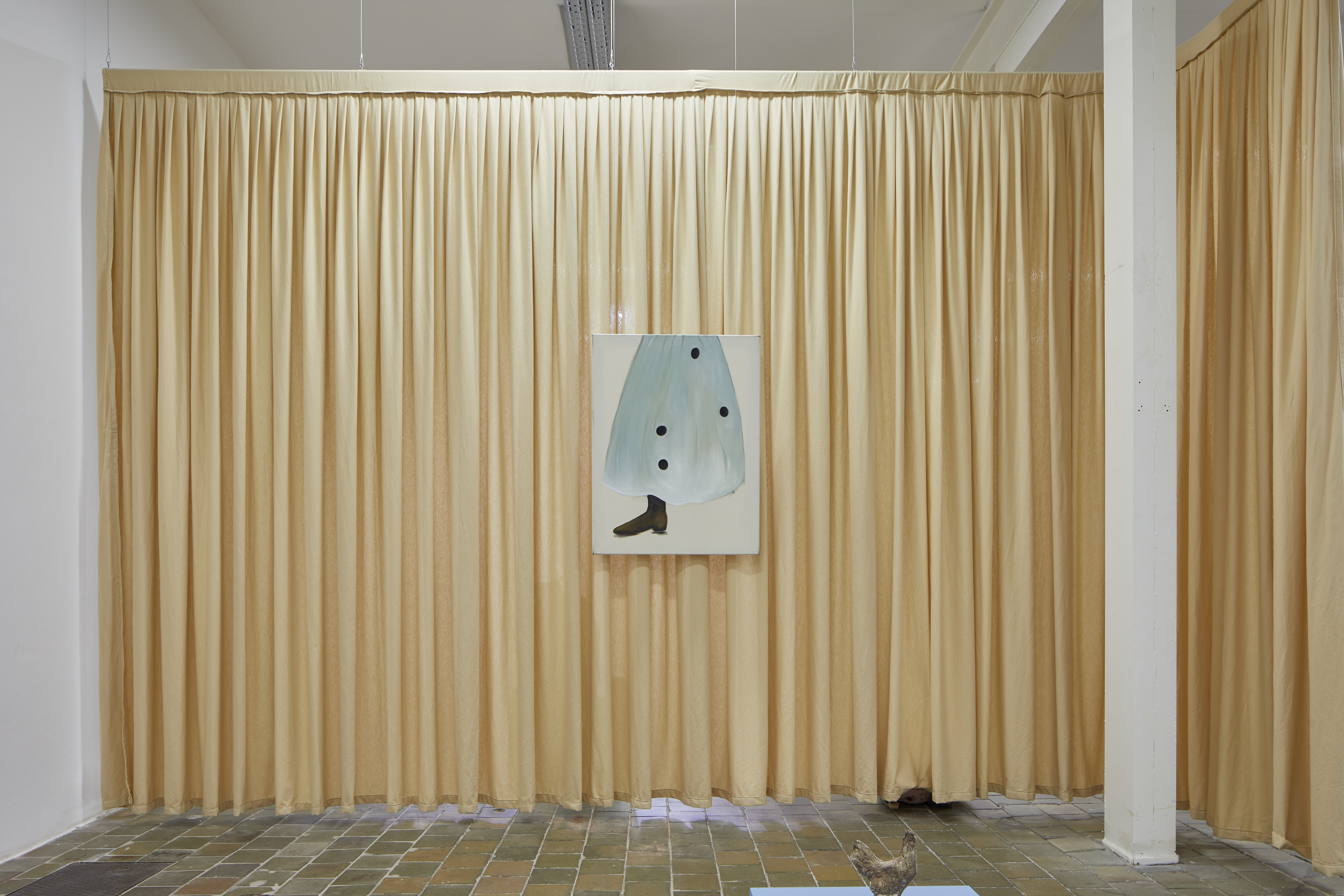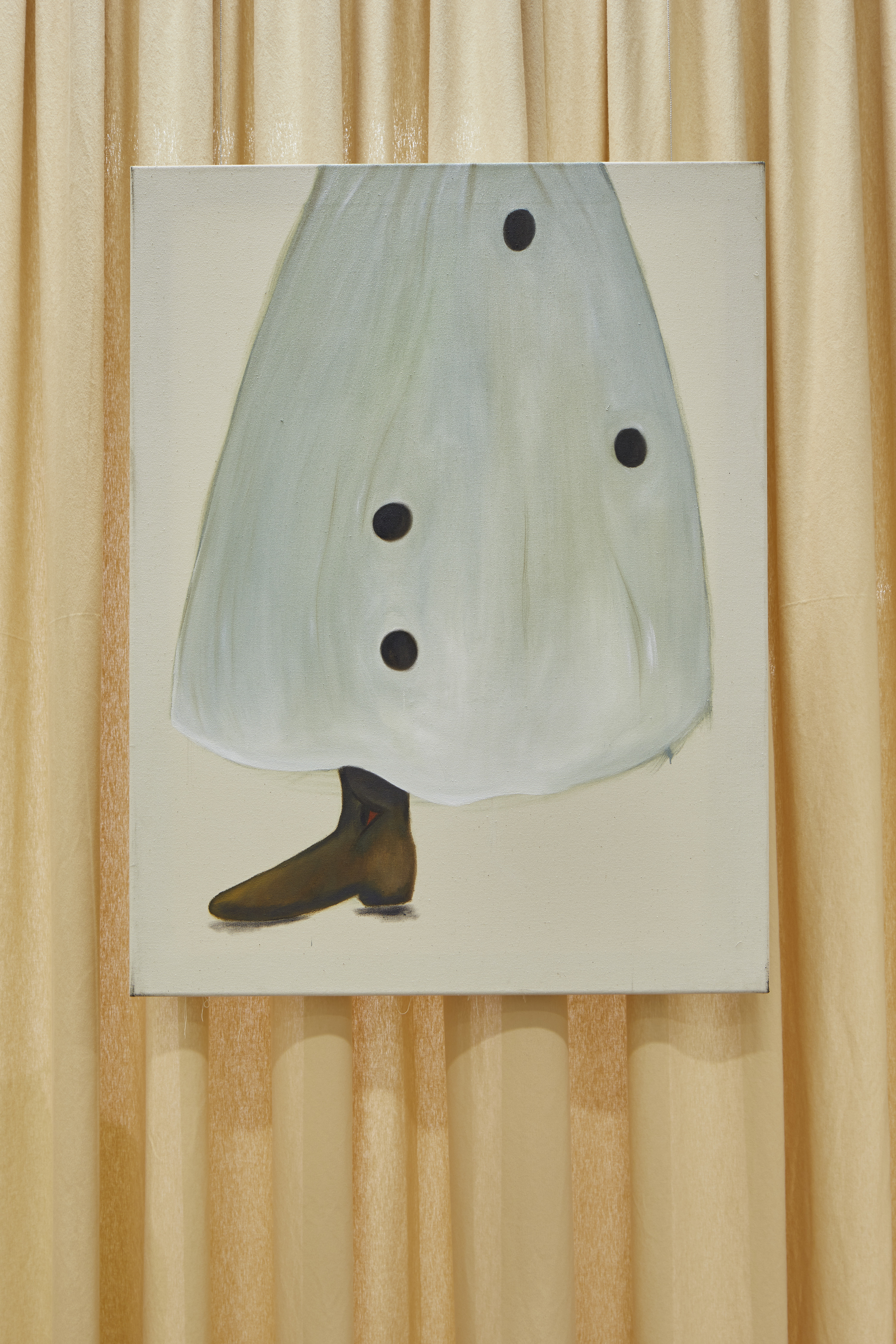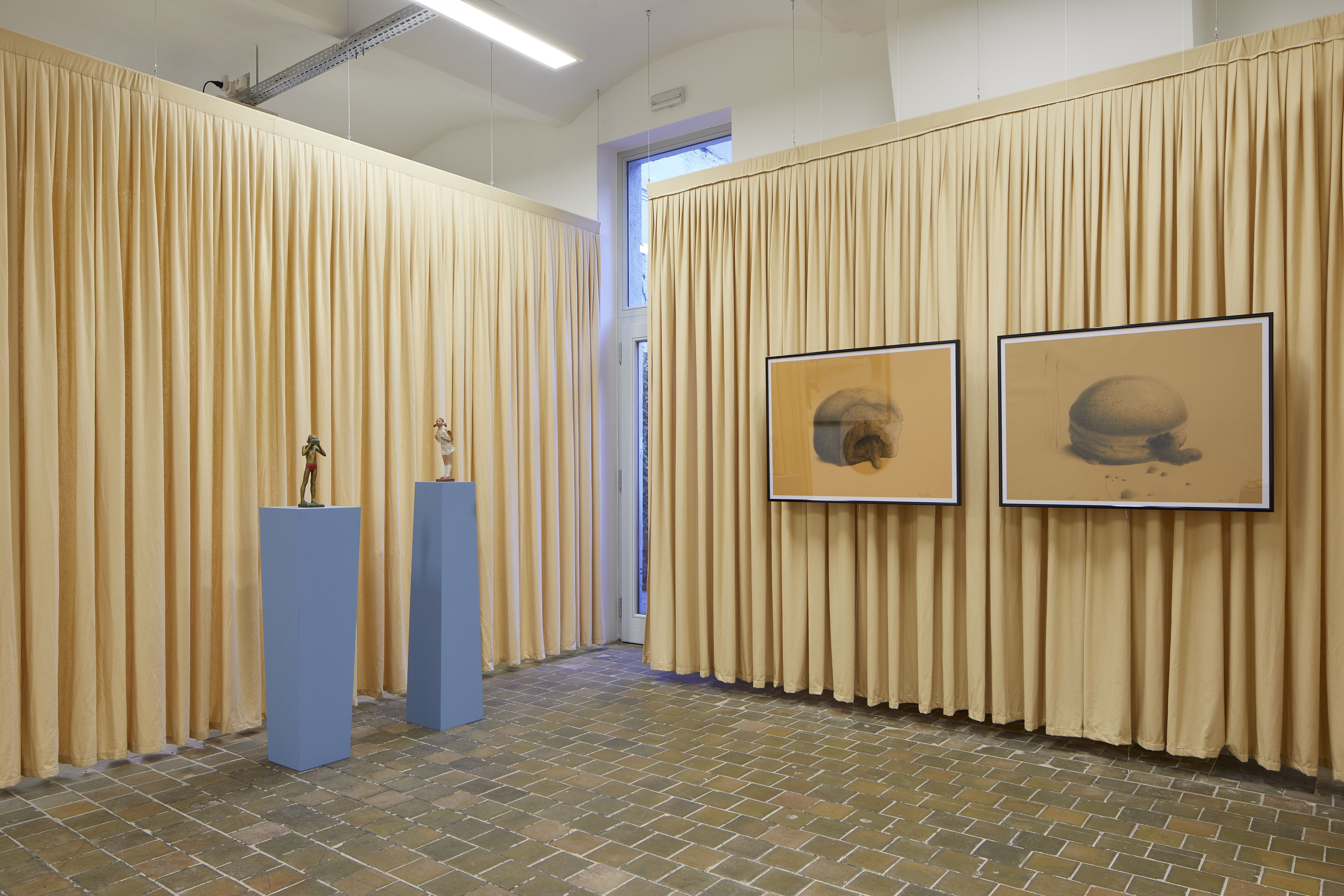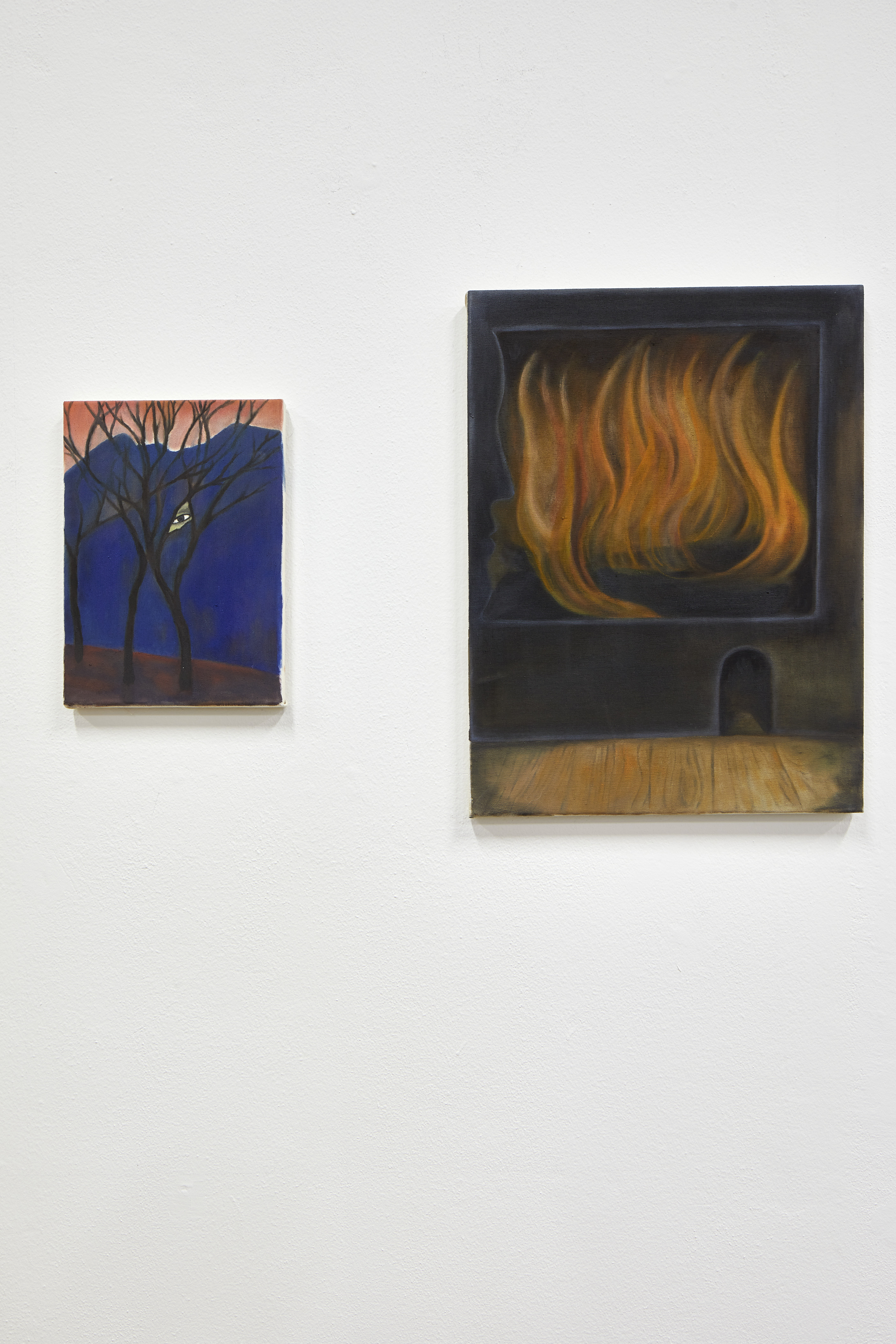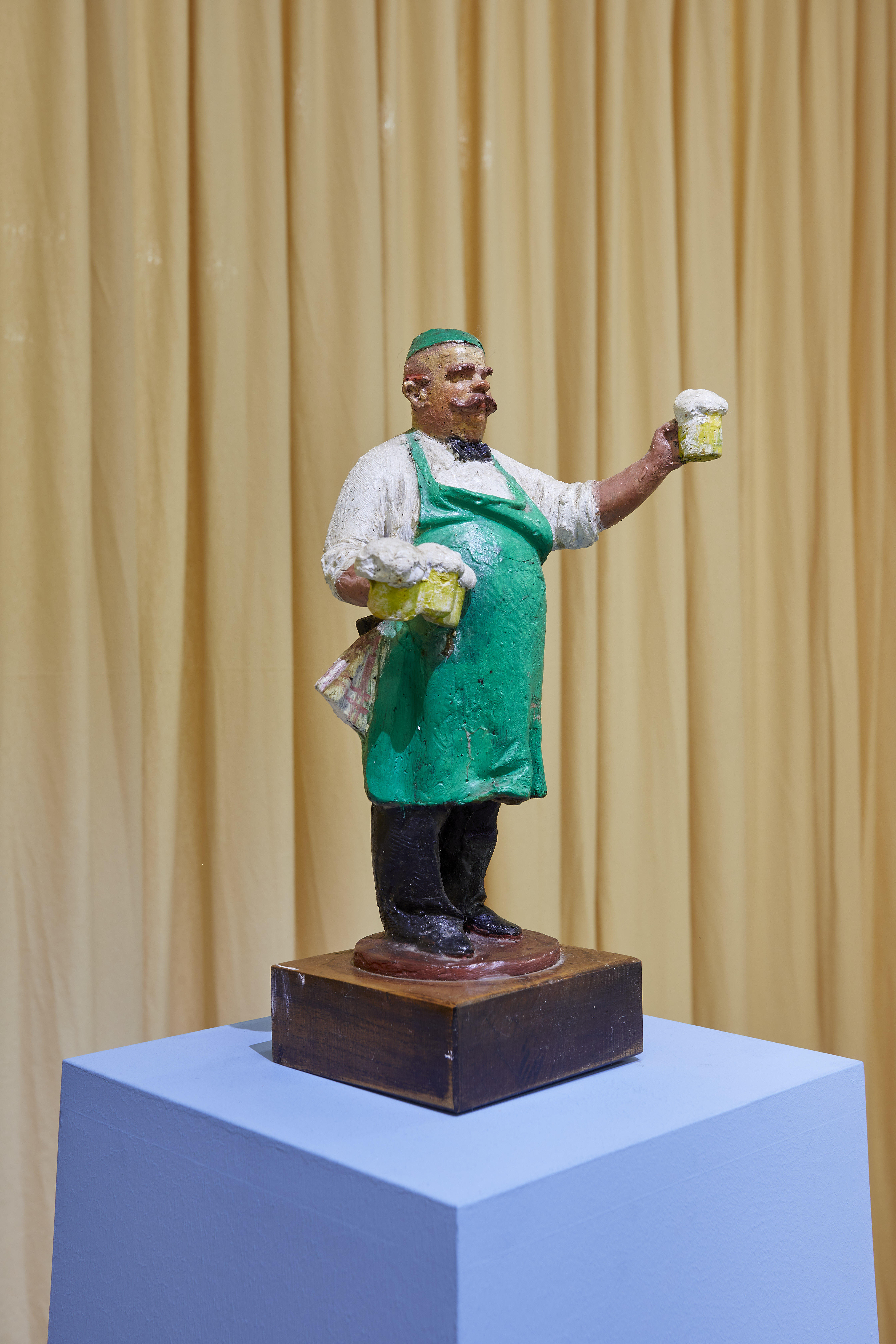At the Foot of the Garden at Centre for Contemporary Art Cursor, Prague
Group show curated by Marek Meduna
2024
![]()
![]()
![]()
![]()
![]()
![]()
Pavla Dundálková, Zdena Fibichová, Jakub Hájek & František Hanousek, Jaroslav Hladký, Stanislav Judl, Stanislava Karbušická, Josef Mladějovský, Mark Ther, Sofie Tobiášová
It is said that art is a foggy mirror in which everyone is free to discover whatever they want. Every feature, every aspect can be spun in such a way as to fit our preconceptions, our beliefs. It must be assumed that no exhibition can be constructed. If you want something real, you need decades, twilight, dawn, a network of rhizomes and wires that connect and divide. A work of art is a formalised fragile thing that stands outside the contradictions of theory and the rhetorical tricks deployed to win this or that controversy.
The external structure of the human body preserves a basic symmetry, but inside all the organs, which increase their active surface area by means of various types of wrinkles and coils, are positioned in a completely asymmetrical way. They utilise space to the full, as though a multitude of possessions had to fit into a small suitcase. But every journey leads primarily through time. Many physical processes need sufficient time to unfold, and this is materialised by the meanders of the metabolism. The entrance becomes an exit upon leaving the gallery, and after climbing the hill, you have to descend. In a Rorschach test the anus merges with the mouth, defecation with digestion. The hands are basically symmetrical, though each has a different purpose and a different set of skills. Old age can be metaphorically likened to youth, death to birth, but innocence, experience or powerlessness have quite different proportions in both parts of human life. The claim that the path leads through time is repeated from the moment the algorithm begins to anticipate which word I will have written a moment later, what impulse I will succumb to – right up to the generation of the smooth diameter of the misted up mirror. The inverted repetition is one of the shapes that returns and which, unlike internal processes, is intended primarily for the eyes.
We believe we are opening up to the world and we pay for this with a blindness to things around us. Incomprehensible is the ignorance with which we decide what concerns us and what does not. Every notion, every concept, even the ones that proclaim the unity of opposites, is a type of visor that can be used to shield other possibilities of interpretation. Just as abstraction allows us to get rid of the vertigo of the multitude of particularities. The more artfully the prism is built around symmetry, for example, the more the spectators looking through it resemble that little boy who clamours to pee from the balcony in order to extinguish the orange-hot disc of the setting sun.
Words can be refined, their edges frayed, their core extracted, moving at the peripheries of conventionally understood meaning. Things can be looked at head on or askance. We must to distinguish visual symmetry from the conceptual and abstract. In the first instance it suffices to fold the paper and cut out any shape. In the second, the emptiness of one side of the work can be balanced by the fullness of the other. The publican serving beer is equated with a view of a darkened full moon. Behind the dense clouds there is an asymmetrical conflict between instinctive reactions and the refinement acquired by upbringing.
Prejudice in the form of “beauty is good” is one of the cornerstones of art, a play on the audience’s expectations. It is the basis of the “dazzle” effect, when something so beautiful catches our attention that we do not notice the hidden deep shadows. But actors of the art world have changed this game more than once: that which is not beautiful does not lead to darkness. That which is created with more than a small portion of ineptitude cannot be manipulated and is a priori without shadow – and therefore good. The manipulation of the viewer’s expectations remains, but the methods are transformed. Artists and curators must therefore above all be distrusted.
---
Sofie Tobiášová
The sun was shining. Outside the open windows blades of dry, uncut straw crackled. She could hear eyes far beyond the branches, see buzzards circling over the hilltops. Soon it would be noon and the sun would drive the last remnants of the breeze from the deeply cut valleys behind their village. Her dreams turned into films about ears that had an understanding of other languages. They descended the steep serpentine curves into the harbour town. They circled the valley like water flowing into a drain. She used to think that paintings were meant to enter into a polemic with their predecessors. Or later on, be a statement against entitlement and gender stereotypes. Then, in keeping with the traditional interpretation, she burrowed into painting in the direction of Coriolis force, though the direction of movement was decided by many things, including the family library, early memories drowning in golden green. The paintings thus became nets that gradually relinquished their catches to her. Yachts bobbed in the harbour, seagulls gained height in the rising thermals. Traffic was light. The sound of the occasional passing car was drowned out by a primal splashing, the flapping of linen sails and the cicadas inseparable from the Mediterranean. Though she was not a Swiss mercenary, she could not escape nostalgia, whose stipend was uncertain and irregular. Now turn onto the main road, she said. They drove around the roundabout three times before finding the right turnoff. She circled the territory of painting three times before deciding that the protagonists of the paintings were flesh and blood, that the multiple expositions of experience could be generalised as a discussion of method. The form of illustration did not bear the guilt of free art. The expansion of its boundaries led to feelings of sparseness and confusion. They parked. She got out of the car. Heat bounced off the hot stones. She descended to forms of illustration, squeezed through the narrow passage between definitions to the forever closed books, to the imagination behind the rapid movement of the eyes and wandering paths of the limbic system. At his swearing she got rid of the car keys, even the old Helvetians going into battle set fire to their dwellings. The wind that ruffled her hair carried many familiar voices. They all cursed the magic of the present moment.
Marek Meduna
Press: https://artviewer.org/at-the-foot-of-the-garden-at-cursor-gallery-center-for-contemporary-arts-prague/
